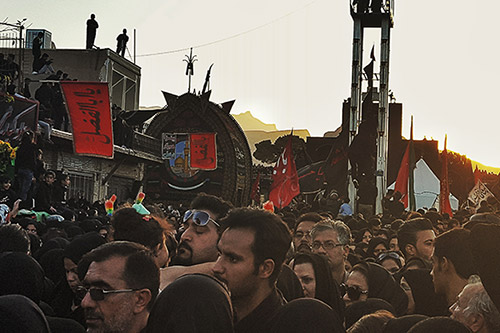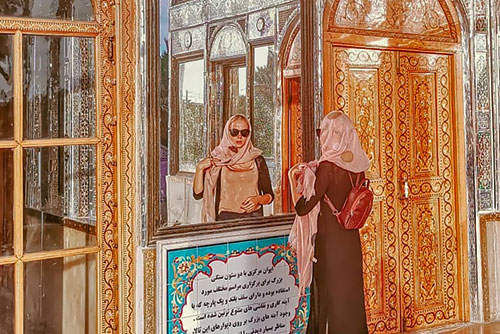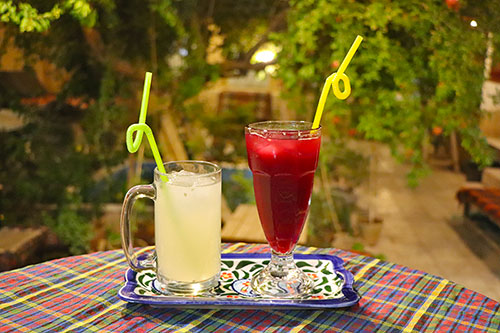 Signin with Google
Signin with Google Signin with Facebook
Signin with Facebook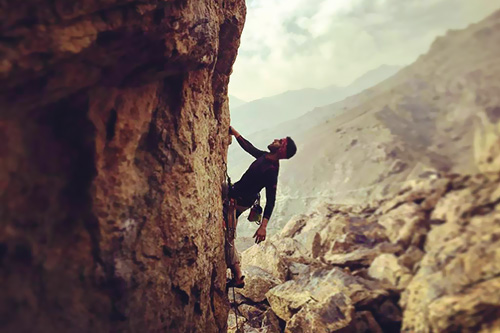
 Survival Tips,About Iran
Survival Tips,About IranThe Best Souvenirs to Buy in Iran
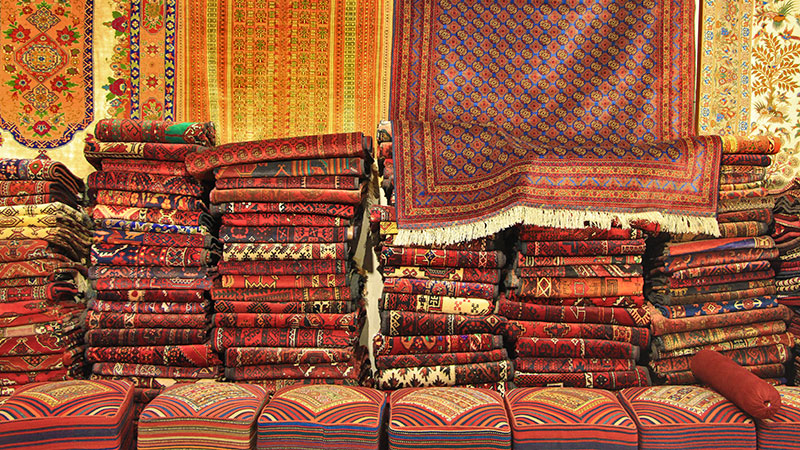
Whether you're a shopping addict or not, it shouldn't make any difference during your trip to Iran: It will be hard anyway to resist the temptation of buying beautiful souvenirs as the country overflows with authentic and really eye-catching handicrafts. You can find them everywhere from the colourful stalls of the bazaars to specialized shops and workshops. From spices to fabrics and copper, there is a huge variety of souvenirs to bring back home with you. In order to help you make your choice, here are the best handicrafts and souvenirs from Iran.
Handmade textiles
Persian has been producing different types of elegant textiles throughout history, which is greatly reflected in the regional clothing of ethnic groups and nomads. Aside from the clothes, which might not be the most proper souvenirs to buy for you, there are various local tablecloths, which Iran is famous for. In every bazaar of the country, you will surely be attracted by their bright colours and amazing patterns. There is "Qalam Kari", originally from Isfahan: It's a piece of fabric with handprinted designs made with a wooden stamp. Don't miss "Termeh", the mesmerizing handwoven cloths from Yazd, which has been admired even by Greek historians. Another famous fabric is called "Pateh" and comes from Kerman: This needlework art, made on wool fabrics, is recognizable to its delicate Persian symbols and arabesques.
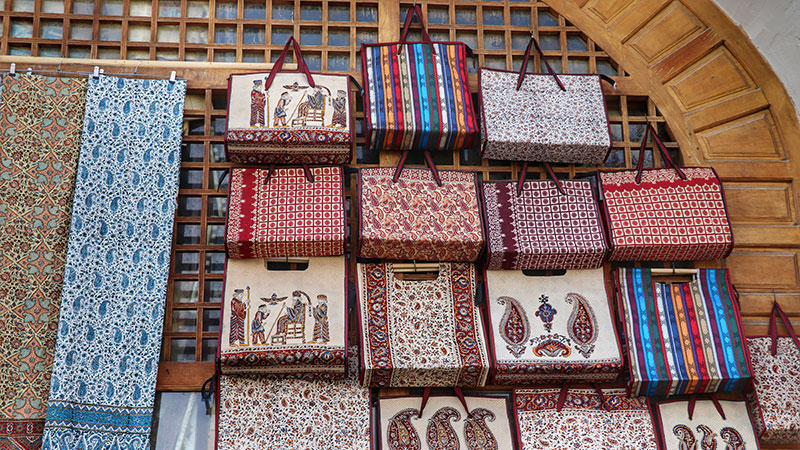
Persian carpets
The most beautiful and high-quality carpets in the world come from Iran: Persia, over centuries, has mastered the art of carpeting and not a single Iranian household doesn't possess its own precious carpets. As you will travel throughout Iran, get familiar with the different patterns and various weaving processes. Carpets made of silk rather than wool are recognizable for their shining and bright aspect, which doesn't fade over time. Decorated with floral designs, animals, arabesques, or even hunting scenes, the best pieces are made in the cities of Qom, Kashan, Isfahan, Tabriz, and Shiraz. It's possible to buy a Persian carpet for any budget, as prices can vary according to the material, the method, and of course the size. And if you fall in love with a large piece, don't worry you can have it shipped directly to your living room!

Ceramic and pottery
Pottery and ceramics have a very long history in Iran, going back to the Neolithic Age. This tradition has evolved through the ages and according to the local tastes. It is still handmade today in many regions of Iran, some cities being famous for their beautiful potteries, such as Lalejin, in western Iran, Meybod in central Iran, or the small village of Kalpuregan, in Sistan and Baluchistan. Vases, plates and many decorative objects are made according to these ancestral techniques. Ceramic decoration, as well as splendid tilework, is one of the most distinctive features of ancient palaces and mosques in Iran.
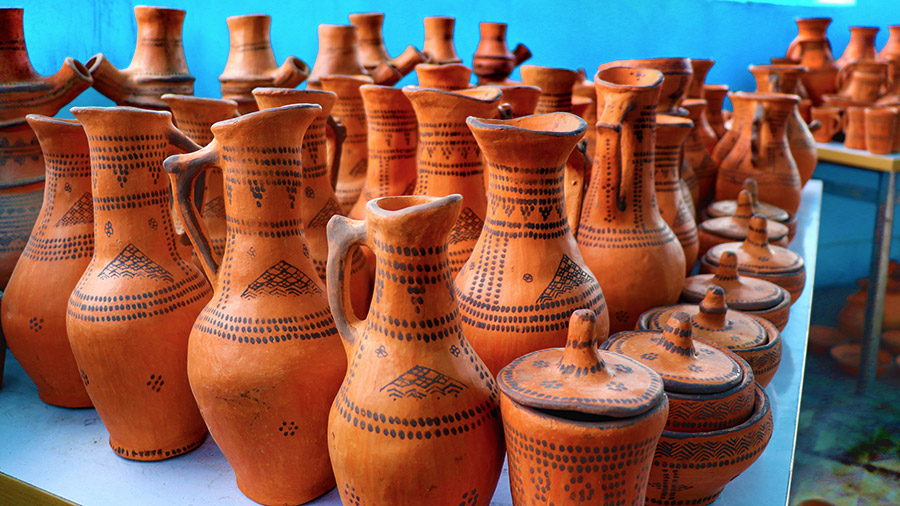
Elegant Mina Kari plates
It's one of the most iconic decorative art in Iran, as delicate as the city it comes from: "Mina Kari" is a traditional Persian enamelwork originating from Isfahan, where the best pieces can be found in its bazaar and artists' workshops. It consists of copper objects, such as plates, vases, or bowls, decorated with painted mesmerizing designs of birds, animals, and flowers. Coloured with different shades of blue, along with touches of red, yellow, and white, it's one of the best souvenirs to bring from Iran. "Mina Kari" has been developed in Persia 5000 years ago and requires extreme precision.

Khatam Kari boxes
"Khatam Kari", which is a form of inlaid work, or marquetry, is also one of the finest Iranian handicrafts. Pieces of wood, bone, and metal are cut into small geometric parts and then trimmed to create all kinds of decorative objects. It goes from boxes to penholders and lamps. Depending on your budget, you can find objects made with aluminium, silver or gold. Creating such a piece requires not only a huge amount of time but also the exceptional skills of the craftspeople, as some pieces can be an assemblage of more than 400 tiny parts. An art that can be observed in the workshops of Isfahan and Shiraz bazaars, where beautiful masterpieces are still created.
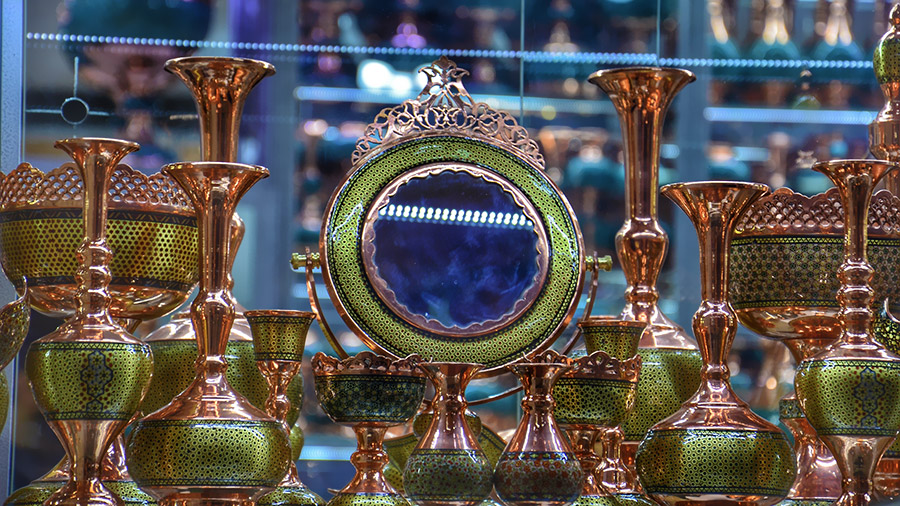
Ghalam Zani metalwork
Along with "Mina Kari" and "Khatam Kari", "Ghalam Zani" is one of the most famous Persian handicrafts. It's a specific technic of metal engraving done on various materials such as gold, silver, bronze or copper. Metal is decorated with beautiful designs and patterns, by hammering down both sides of the metal sheet or removing tiny parts of the surface. It's an ancient art that has been used to decorate vases, boxes, dishes, and any metal objects over centuries. Isfahan remains the centre of Ghalam Zani production and the work of artisans can still be observed in the alleys of its bazaar.

Local dolls and puppets
The creation of traditional dolls has been a major part of local and regional handicrafts in Iran. Traditionally made by grandmothers and mothers, there weren’t just used as toys for kids, as they carry with them a story that reflects the lifestyle, beliefs and culture of a community. There exist many types of stitched dolls, all with their own styles, colours, and fabrics, which belong to different regions and communities in Iran: South Khorasan has “Dotuk”, Lorestan has “Layli”, “Dokhtuluk” are made by rural women of Qeshm Island. Not only regional, but these dolls also have cultural significance, such as “Takam”, a doll used during Nowruz, the Persian New Year, or “Beybeyak”, which belongs to the Zoroastrian community. In Mazandaran province, local dolls are made with wood and called “Taduneh”: people believe it protects them from the influence of bad people.
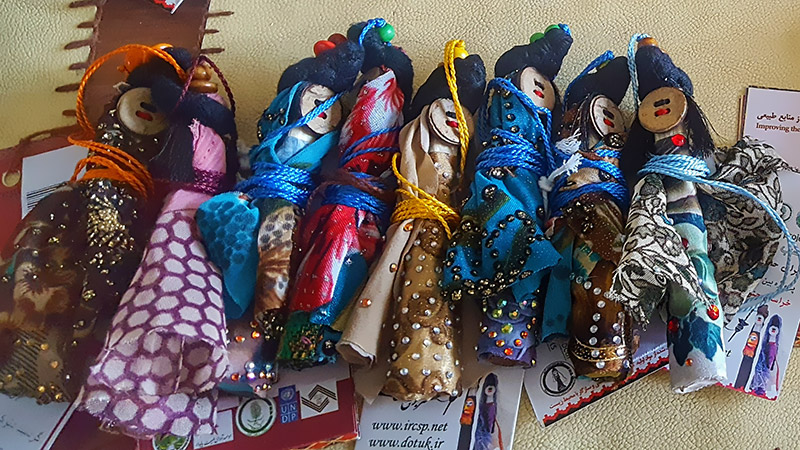
Saffron, spices, and herbs
With their bright red, yellow, and green colours, spices are the stars of the bazaars. They are attracting many tourists, admiring the piles of different seasonings on the stalls. There are many spices used daily in Iranian food and they can make an affordable and tasteful souvenir. Of course, Saffron is the spices' queen and there is no better place to buy it than in Iran, the first producer in the world. The fragile branches of red gold are handpicked each year in the fields of the country before reaching the alley of the bazaars. Besides saffron, turmeric is another common spice in Iran, with lots of proven health benefits, as well as cardamom and cinnamon. While shopping for spices, take your chance to grab some more ingredients to give your cookeries a taste of Iran. For instance, take a load of the small red barberries called "zereshk" to cook perfect rice with it; pick some incredible dried limes to make your stews, and make your choice among the dozens of dried herbs ("sabzi") which have unique aromas.
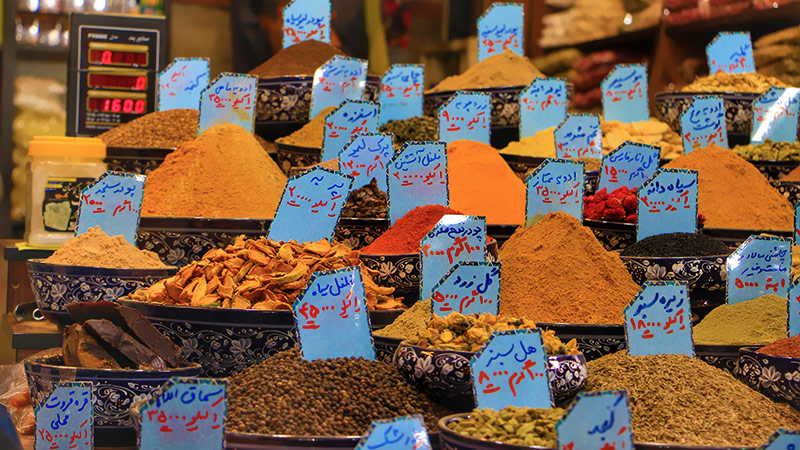
Tea and floral essences
Tea lovers are most welcomed in Iran, where tea is as essential to Iranians as water is for the body. Tea has been cultivated in Iran for centuries and the northern regions of Gilan and Mazandaran are producing very fine black tea. If you cannot handle theine like Iranians, rush over the large range of natural herbal teas and infusions, from rose petals to bitter orange blossom. Just pour some hot water on it to appreciate the aroma. Think about getting some saffron candy rock ("Nabat") to sweeten your hot beverage. If you're more tempted by something cold, buy floral essences such as rose, orange, or willow water, to make your own delicious "sherbet" (syrup).
Nuts and sweets
Besides the spices, here are the other stars of the bazaar: nuts. Iranian loves eating all kind of nuts, from pistachios to almonds, walnuts, and cashews. You can find them in different sizes, raw, salty, or with saffron. If you can't decide which one to buy, don't worry, there exists mixed of various nuts that you can buy per kilo or pack. As many of these nuts are produced locally, prices are often way cheaper than in European countries for instance. Along with the nuts, get your hands on some Iranian sweets. What best souvenirs to bring than a taste of the country? Among the most famous is "Gaz", a kind of nougat made in Isfahan with rose water and pistachios. Don't miss "Sohan" either, an extremely sweet delicacy made with wheat sprout, flour, rose water, saffron, and cardamom.

Turquoise jewellery
Walking in the alleys of the bazaars, your eyes will surely be attracted by the deep blue of Iran's most precious stone: turquoise. The city of Nishapur, in Khorasan, is well-known for its significant mines and the gems themselves are solid and hard, which makes them a perfect material for creating pieces of jewellery. You can find pre-made stone jewellery or simply buy the stones in any bazaar in Iran. Turquoises are not only a beautiful ornamental object but it's also considered in Persian culture as having many benefits. It is believed to detoxify the body, release stress and depression, and protect from the evil eye.
Calligraphy and miniature
Miniature is an ancient art that has spread in many parts of the world, from Europe to Asia and was mostly used to decorate ancient manuscripts. In Iran, it's still a living art produced by the most skilled and contemporary artists, which can be found in Isfahan in particular. The artists draw small and detailed pictures on all kinds of surfaces, from paper to ivory and camel bones, and many of them can even design a piece for you in their workshop. As for calligraphy, it also has remained one of the most important art in Persian culture, creating eye-catching art pieces out of Persian script.
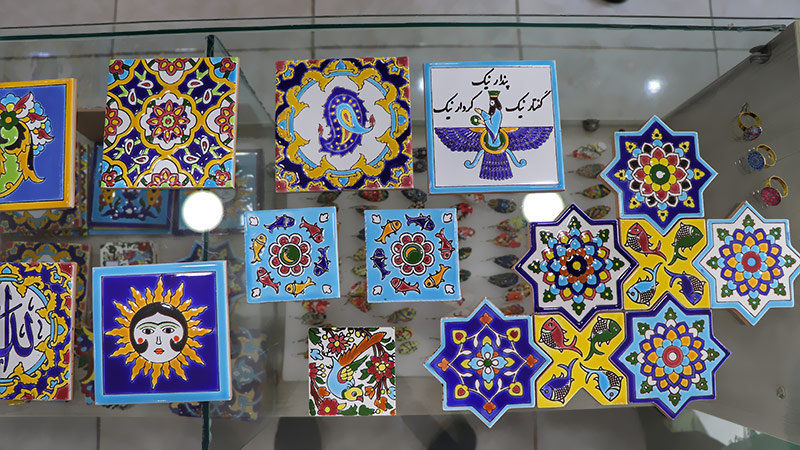
From metalwork to ceramics, food, or clothes, the opportunities for buying souvenirs and gifts during your trip to Iran are countless. The best place to make your choice remains the bazaars, which offer a great diversity of objects, with different qualities, sizes, and thus prices. Pay attention to the local handicrafts and delicacies of the various city and regions you travel to, as each part of Iran has developed its own specific and beautiful handiworks.
